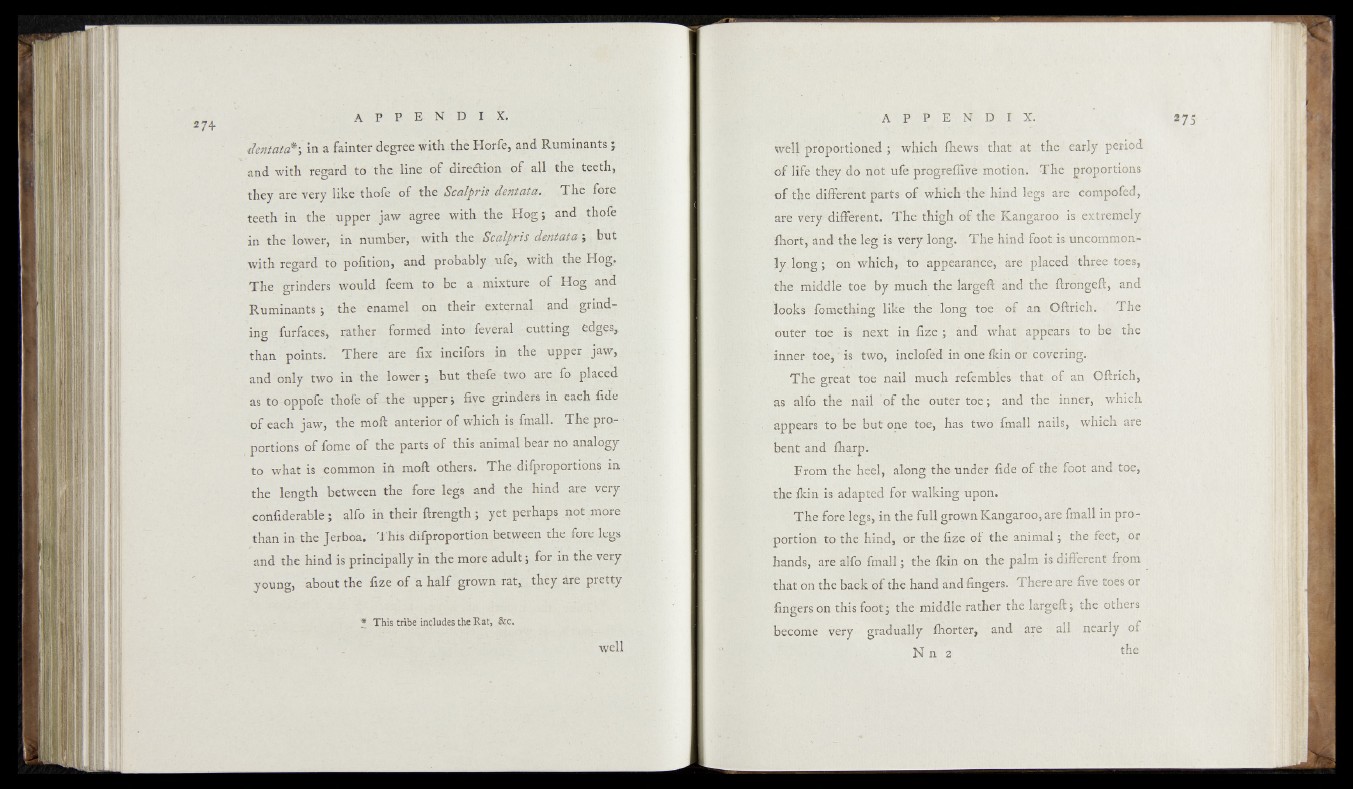
dent at a* i in a fainter degree with the Horfe, and Ruminants ;
and with regard to the line of direction of’ all the teeth,
they are very like thoie of the Sca/pris dent at a* The, fore
teeth in the upper "jaw agree with the Ho g; and thofe
in the lower, in number, with the. ScaLpris dentata; ; but
.with regard to pofition, and probably ufe., with the Hog.
The grinders would feem to be a.mixture of Hog. and
Ruminants; the enamel on their external, and grinding
furfaces, rather formed into- feveral r cutting edges,
than points^ There are fix incifors in the upper jaw,
and only two in the lower; but thefe;tw<> are,fo ^placed
as to oppofe thofe o f the upper; five grinders in eachfide
o f each jaw, the moft anterior of which is-fmall. The pro- ’
portions of fome of the parts of this animal bear no analogy
to what is common ih moft others. The difproportions in
the length between the fore legs and the hind - are very
confiderable ; alfo in their ftrength; yet. perhaps not more
than in-the Jerboa. This difproportion between the fere legs
and the hind is principally in the more adult; for in the very
young, about the fize of a half grown rat, they are pretty
* This, tribe includes the Rat, &c.
well
well proportioned ; which! {hews that at the early period
o f life they do not ufe progreflive motion. The proportions
o f the different parts of which*the hind legs'are compofed,
are very différent. The thigh of the Kangaroo is extremely
fhort, and the leg is" very long. The hind foot is uncommonly
Jong ; on which, to appearance,, • are 'placed "three toes,
the middle toe by much' the. largeft and* the ftrongeft, and
looks* ~ fo.mç thing like the long toè of an Oftricli.- The
outer toe i s j ‘ne':£tr in fize‘; ândS^ha^'appë'ars ' to ’b$. the
îannéi toe, fis two, inclofed in one fkin or covering.
The great toe nail much relembfe® thaq. of an Oftrich,
as alfo the mail of the outer toe ; and theJ’ in'fler, which
appears to be but ope toe, has two finall nails, which are
bént and fharp.
From the heel, along the? under' fidd 'of the foot and, toe,
.the ikin is, adapted for walking upon.
The fore legs, in the full grown Kanga^qp,. ai|£final! in proportion
to the hind, or the fi&e of the afiimal ; the feet, or
hands, are alfo- fmall ; the fkin on the palmds different from
that on the back of the hand and fingers. There are five toes or
fingers on this foot; the middle rather the largeft ; the others
become very- gradually fhorter, and are all nearly of
N n 2 . ' S I